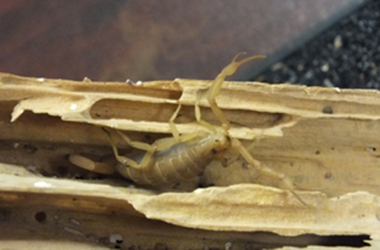
One of the most infamous of pests, the scorpion is one of the most difficult to eliminate. They spend most of their time tucked away in cracks or crevices and are even found in children’s sand boxes.
What does the ever-changing weather patterns have to do with pest control? Quite a bit, actually. As northern parts of the country are experiencing extremely low temperatures, and other areas are oddly warmer than usual, the change in our typical seasonal patterns raises a red flag for changes in pest activity.
Irregular changes in the weather, such as spikes in cold temperatures, have the potential to significantly diminish a pest predators population, affecting the balance of the ecosystem and allowing pests to thrive and flourish as they take advantage and adapt without anyone to threaten their livelihood. As the populations of predators decrease, pests are able to recuperate from the weather change significantly quicker.
The impact of climate change on insects and humans is far reaching forest and food crops could be affected and diseases spread by insects could have a wider range. Nature has a delicate balance and it doesnt take much a slight temperature variation, or even a movement in the course of a river to cause changes that move throughout an ecosystem.
Since mosquitoes are the most common carriers of malaria and yellow fever, dramatic increases in these diseases would be likely. Moreover, both the National Centers for Disease Control and the World Health Organization report that current treatments for malaria and yellow fever are becoming less effective, leading to the potential for plague-like levels of these diseases, unlike anything seen since the U.S. Civil War.
Pests like the cockroach, bed bug, scorpion and mosquito are among the most adaptable and successful life forms on earth. For example, cockroaches are among the oldest living creatures. They survived the Ice Age, and are believed to have persisted for more than 350 million years. With that record of success, we can be sure they will adapt and thrive in changing climate patterns.
Bed bugs have been around since the 11th century and have learned to live and adapt as humans do while acclimating and adjusting to the warmer and milder climates, creating a new page in their pest evolution. In the southern part of the country, these nomadic pests have caused infestations to rise exponentially, threatening vacationers favorite sunny spots and bringing home with them unwanted house guests.
We know that there is a strong, direct relationship between the level of insect populations and fluctuating temperatures. As variations in the seasons become more evident, predictions for pest activity in 2013 reflect similarly to what weve seen in 2012. And since 2012 was one of the hottest years on record, what we can expect in 2013 is a continuation of abnormal pest activity.

One of the most infamous of pests, the scorpion is one of the most difficult to eliminate. They spend most of their time tucked away in cracks or crevices and are even found in children’s sand boxes.

What does the ever-changing weather patterns have to do with pest control? Quite a bit, actually.

In the past month, many residents in Las Vegas, Nevada, noticed small scorpions in their homes, specifically in beds, shoes, garages and near pets’ water bowls.